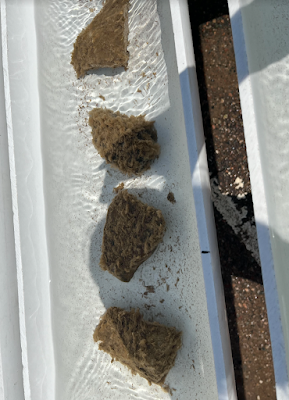Hello! My name is Raven (Rae) Mckechnie and I am currently a double major at Lake Superior State University (LSSU). I am majoring in Animal Biology (Animal Health concentration) and Marketing with an E-Marketing certification. After graduation, I plan on continuing my education by attending graduate school. I am interested in a career that combines my passions for aquatic research, animal rehabilitation, and conservation and management of freshwater ecosystems. Last summer, I had the privilege to work for my tribe’s environmental department with the Sault Tribe of Chippewa Indians, where I was able to learn about invasive species management and removal while assisting on clearing efforts of active dangerous invasive plants. I am also continuing to strengthen my knowledge about aquatic research through my current employment at Lake Superior State University’s Center for Freshwater Research and Education. It is here that I am fortunate to be able to conduct my senior research with my mentor Dr. Ashley Moerke on Didymosphenia geminata (hereafter, Didymo) through the Center for Freshwater Research and Education as well where I can tie in my previous experience with invasive species and their effect on the ecosystem and fisheries industry into my research and overarching career goals.
Didymo is an invasive algae that has been detected in the St. Marys River since 2015. Didymo is a threat to the environment because the dense mats that it forms alter habitat availability and light penetration and thus biodiversity and lead to a decrease in available food sources for fish. These dense mats can also cause economic issues impacting the fishing industry by their stalk material getting caught and ruining fishing lures and boat motors.
 |
| A clump of Didymo prepared for an experiment. Photo: Rae Mckechnie |
There is no current method available for management of Didymo. The main method of control against this invasive species is through prevention of the continued spread of Didymo. This species of diatom can be spread through contaminated water and fishing equipment and boats that carry microscopic Didymo cells to other water bodies if unwashed. Since the main method of control is stopping its spread, the importance of being able to map and detect this invasive species prevalence early on is ever-pressing.
The basis of my senior research project is to determine the threshold level and sensitivity of environmental DNA (eDNA) testing for Didymo detection in Michigan waters. Since the sampling of Didymo with eDNA is a novel practice, there aren’t any established guidelines available. My project began by using eDNA methods established by a previous study (Cary et al. 2014). However, existing methods do not establish how the likelihood of detection of Didymo using eDNA would vary depending on the extent of Didymo populations, or the distance from the source of Didymo. The goal of my study is to understand, in a controlled environment, how eDNA “signals” differ under different distances and population sizes to enhance the interpretation of eDNA data. This is accomplished by sampling several sites spaced downstream from the main rapids in St. Marys River, a known Didymo infestation site, to determine the ability of the eDNA technology to detect Didymo at varying distances from a known positive source.
The basis of my senior research project is to determine the threshold level and sensitivity of environmental DNA (eDNA) testing for Didymo detection in Michigan waters. Since the sampling of Didymo with eDNA is a novel practice, there aren’t any established guidelines available. My project began by using eDNA methods established by a previous study (Cary et al. 2014). However, existing methods do not establish how the likelihood of detection of Didymo using eDNA would vary depending on the extent of Didymo populations, or the distance from the source of Didymo. The goal of my study is to understand, in a controlled environment, how eDNA “signals” differ under different distances and population sizes to enhance the interpretation of eDNA data. This is accomplished by sampling several sites spaced downstream from the main rapids in St. Marys River, a known Didymo infestation site, to determine the ability of the eDNA technology to detect Didymo at varying distances from a known positive source.
 |
| Collecting water samples in the St. Marys River. Photo: Rae Mckechnie |
.jpg) |
| Nicknamed "gumby suits," orange immersion suits keep researchers safe and warm during shipboard sampling runs. Photo: Rae Mckechnie |
 |
| Didymo cells under the microscope. Photo: Rae Mckechnie |
 |
| Water flows through each stream channel for collection and analysis. Photo: Rae Mckechnie |
 |
| Clumps of Didymo ready to do their part for science. Photo: Rae Mckechnie |
-----
Works Cited:
Cary, S. C., Coyne, K. J., Rueckert, A., Wood, S. A., Kelly, S., Gemmill, C. E. C., Vieglais, C., & Hicks, B. J. (2014). Development and validation of a quantitative PCR assay for the early detection and monitoring of the invasive diatom Didymosphenia Geminata. Harmful Algae, 36, 63–70. https://doi.org/10.1016/j.hal.2014.04.003



